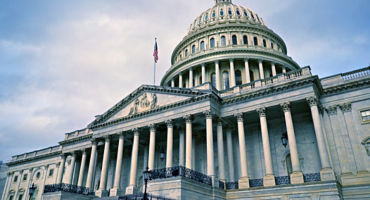How attractive are bonds at the moment?
I think there is a lot of value in fixed income right now. Rising interest rates have pushed up the yield on the US 10-year Treasury bond through 2023. Meanwhile, although corporate spreads aren’t exactly cheap, they also aren’t expensive relative to historical averages. This combination can make all-in yields compelling. It is possible to achieve yields greater than 6% at present in high-quality fixed income.
Are you worried about recession risk?
Like every other portfolio manager, I too am weighing the likelihood of a soft versus a hard landing, but I tend to think we are in a positive total return environment for bonds regardless. When looking at each of these scenarios, it’s important for bond investors to consider the impact of skew on total return. I think there’s an attractive skew to be found within a hard landing scenario. For example, take an intermediate corporate bond with a four-year duration, yielding around 5.5%. If we were to see a 100 basis points (bps) increase in yield, basic bond maths tells us we can expect a one-year total return of 1.5%. Conversely, a 100 bps decrease in yield results in a 9.5% total return. I put more weight on the latter scenario playing out than the former, and think this skew is underappreciated by the market. If you are at all concerned about the global economy, bonds could make a lot of sense.
What are your views on credit risk at the moment?
In my view, BBB rated, intermediate-duration (two- to ten-year) credit offers compelling yields. I prefer the yields and spread available in this part of the market to longer-dated corporates where 30-year spreads are tight.
Having exposure to corporate bond spreads is attractive, but given the uncertain market outlook, I don’t want to be too far down in quality at this point. For that reason, BB rated high-yield exposure could be a more compelling option than lower-rated bonds.
How are you positioned from a maturity perspective?
My view on maturity and duration is somewhat nuanced, given the market backdrop. I believe portfolios could benefit from exposure to falling yields.
In US Treasury bonds, I favour three- and five-year exposures. If we enter a recession, there is scope for yields to rally. As the market prices in a Fed-easing response, I think low-duration Treasuries could outperform longer-dated exposures, resulting in a “bull-steepening” yield curve, where the short end of the curve falls faster than the long end. I also like four- and six-year corporates for the all-in yields available per unit of duration.
What sectors or markets have you been adding to recently?
There seems to be good value in banks at the moment, especially looking at current spreads relative to history, and I think a soft landing would be positive for their businesses. I also like the energy sector, where I see promising opportunities in both developed and emerging market (EM) energy names.
At the margin, we have been adding to EM corporates more generally; the new-issue market is now reopening with some interesting buying opportunities. EM high-yield corporates, again focused on BB rated names, currently provide attractive spreads compared to their developed market equivalents.
How could you position for a hard landing?
If Fed tightening is still working its way through the system and we ultimately end up with more of a hard landing scenario, we might see more volatility in sub investment-grade exposures, but I’m not convinced that high-yield bond prices would necessarily fall too far. Spreads would likely widen but I’d expect the positive effect from duration to offset this somewhat.
All-in yields are attractive on a historical basis and could provide a compelling anchor from a total return perspective. As Figure 1 shows, looking at various scenarios (rates higher/lower, spreads wider/tighter), investors have an opportunity to earn their yield, with price effects either adding or detracting in terms of holding period-total returns.







